 .
.
Once upon a time on an old French farm. A team of oxen pulling a plow. And a single horse similarly in use.
.
All content included on this site such as text, graphics and images is protected by U.S and international copyright law.
The compilation of all content on this site is the exclusive property of the site copyright holder.
Antique Tractors at the Fair
Thursday, 23 August 2024
At the 4-H fair there are open animal events, competitions for home grown vegetables, farm crops, flower specimens and floriculture, honey show, baking and food preservation, home art show. And an antique tractor show.
There's work for draft animals to do on a farm: plow the fields for corn, wheat and oats, plant the crops, cultivate the fields, bring in the hay crop, pull wagons of field corn, haul manure.
 .
.
Once upon a time on an old French farm. A team of oxen pulling a plow. And a single horse similarly in use.
Howell Living History Farm is in Mercer County, New Jersey. They farm with horses, as would happen in 1890 to 1910.
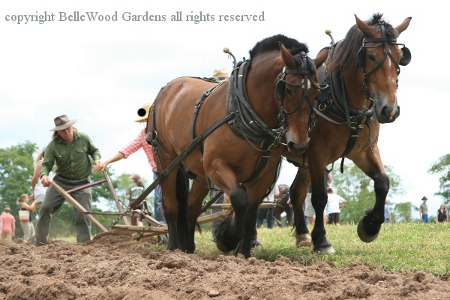 .
.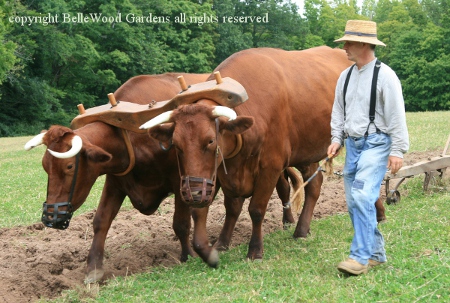
A popular public program is the plowing match in late August when teams compete to display their abilities and skill.
Horse Power. If we're talking about an actual horse it becomes obvious it must be variable. Heavy built draft horse such as Clydesdale, for example, compared to a thoroughbred race horse. And how do you compare a horse's horsepower to a mechanical device like, say, a tractor.
The term was adopted in the late 18th century by Scottish engineer James Watt,
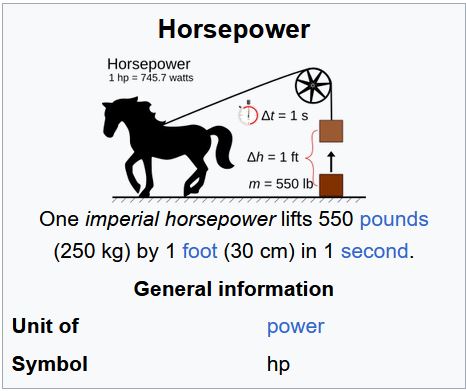
to compare the output of steam engines with the power of draft horses.
And after the horse, along about 1850, there came the traction engine, a steam-powered tractor used to move heavy loads on roads, plow ground or provide power at a chosen location. Sometimes called road locomotives to distinguish them from railway locomotives – that is, steam engines that run on rails.
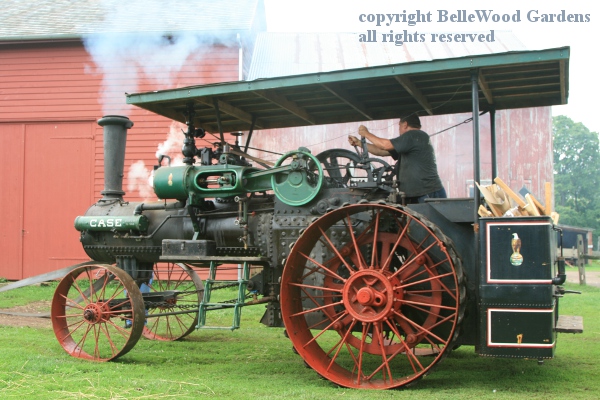
Wood fired Case steam traction engine at Howell Living History Farm. Not like turning a key
and starting to go to work. Need to build up a head of steam before it would be ready to work.
Traction engines were large, robust and powerful. Also heavy, slow, and difficult to manoeuvre. They revolutionized agriculture at a time when the only alternative prime mover was the draftt horse. Horses. Steam traction engine. And then came internal combustion engines - and tractors.
.
There are vendors at the fair. Items for the casual visitor. And tractors.
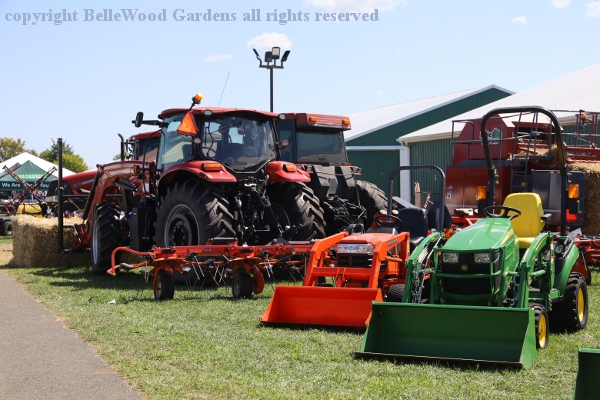
Something to mow the lawn. Big machinery for working farmers.
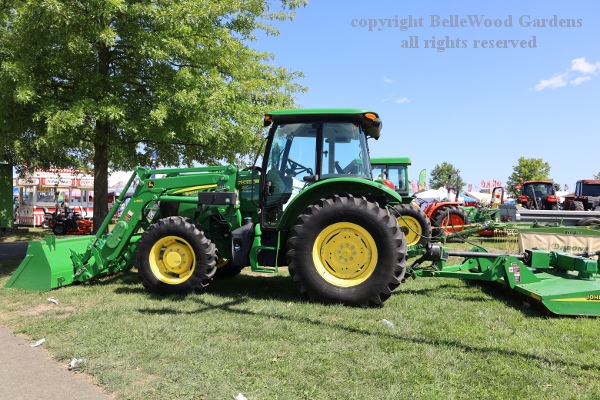
Antique Tractor Show
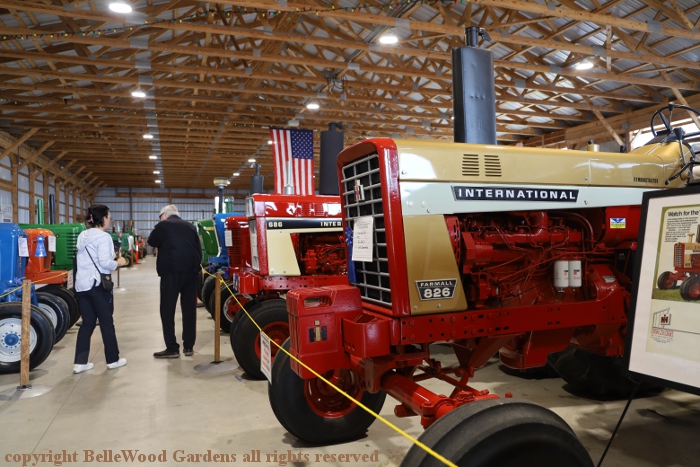
There's one building for antique tractors. On display and in competition. Some have been awarded blue ribbons.
Green and yellow John Deere are popular, see them all around. Look at these two,

big and little. Worth a smile. But tractors don't grow as does foal into a draft horse.
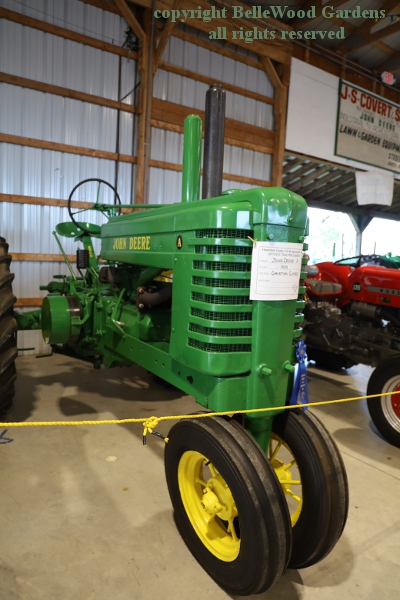
Antique for sure. An 85 year old, 1939 John Deere tractor.
Perfect paint. As spiffy as when I had my car detailed.
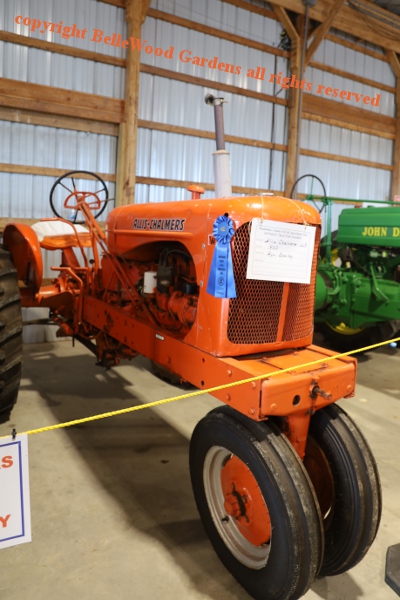
This beauty from 1952 surely looks as good as new. Allis-Chalmers tractors
were all Persian Orange, the available paint color most closely resembling
the color of the California poppy. Allis-Chalmers was dissolved in 1999.
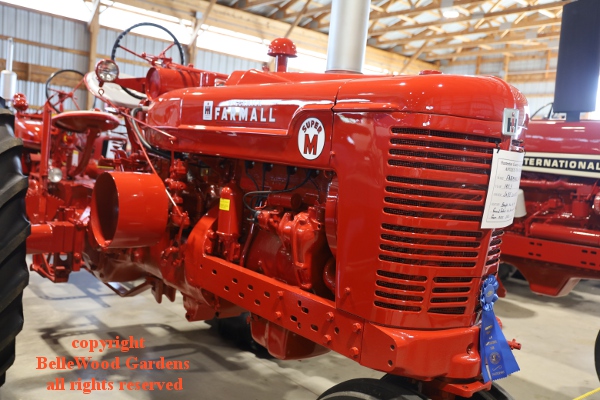
This sturdy looking 1953 Farmall could easily manage the work once done with horses
on small to medium size family farms. First a model name and later a brand name for
tractors manufactured by International Harvester for row-crop work, theirs were the
first tractors to combine several different useful characteristics in a single machine.
These traits included a single front wheel or narrowly spaced pair, high ground clearance, quickly adjustable axle track, excellent visibility around and under the machine, light weight with sufficient power for plowing and harrowing, and a belt pulley for belt work and all at low cost, with a familiar brand and an extensive distribution and service network.
From horse to steam to internal combustion engines. Blue sky thinking. Imagination.

What next . . .
Back to August
Back to the main Diary Page